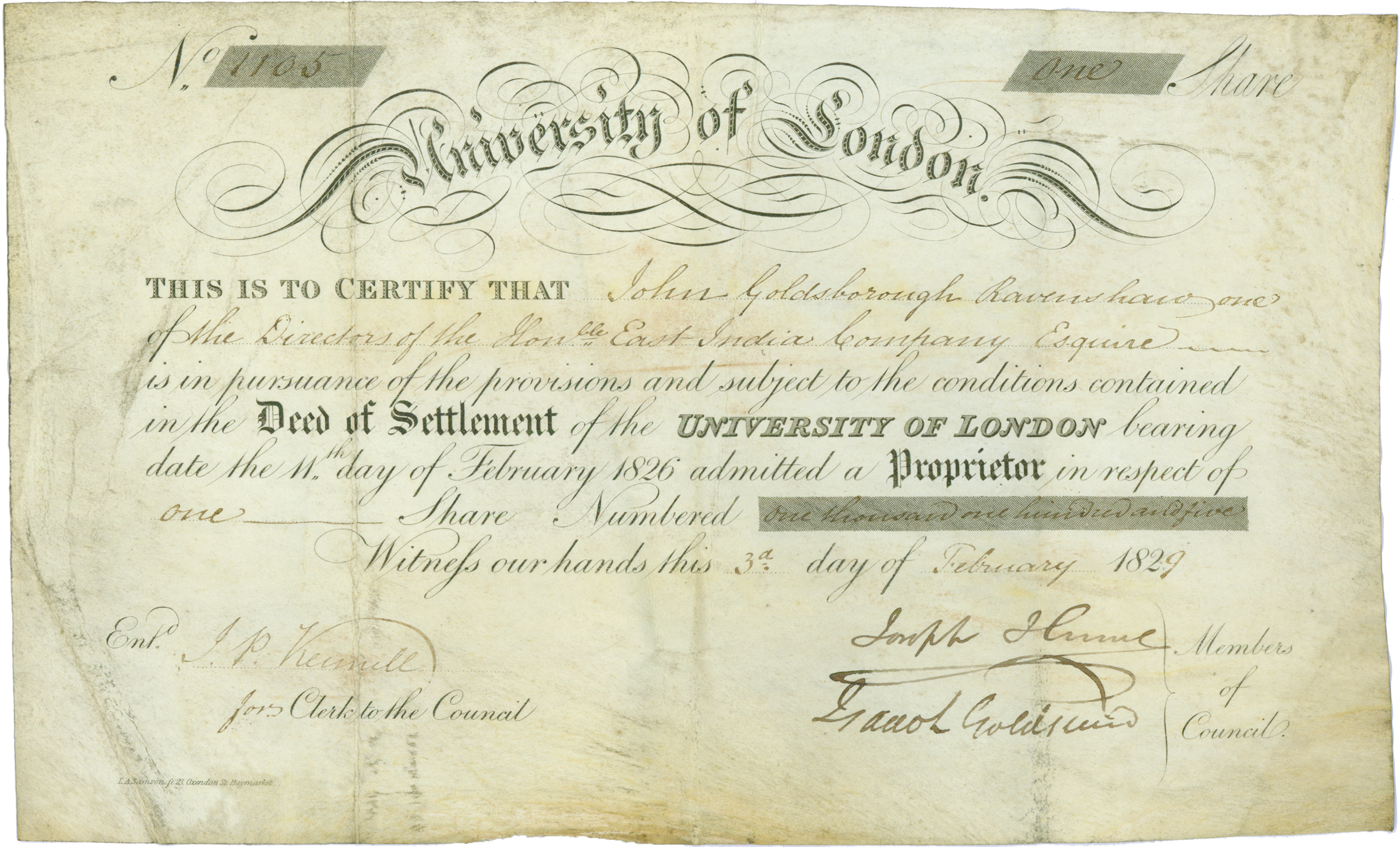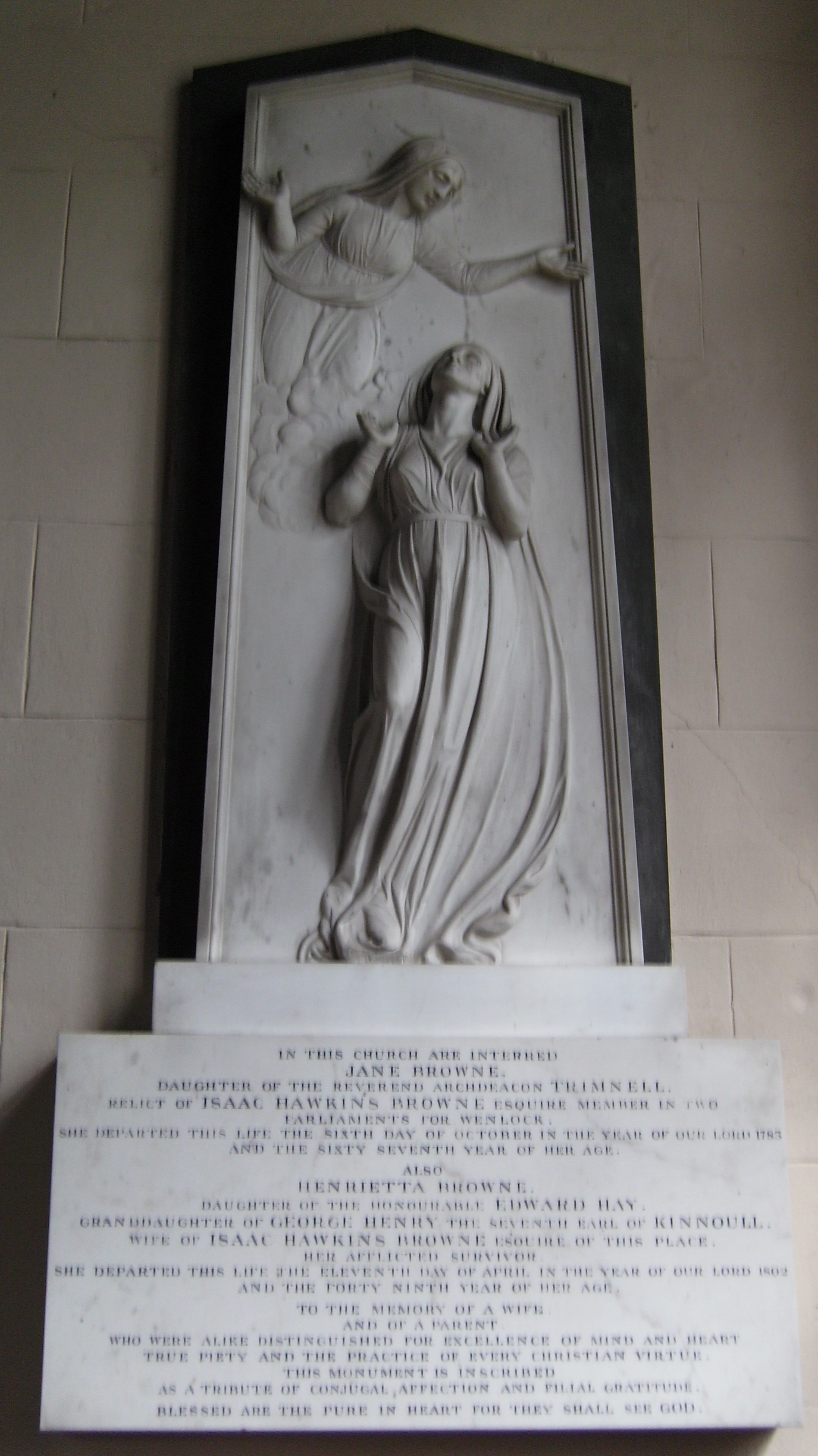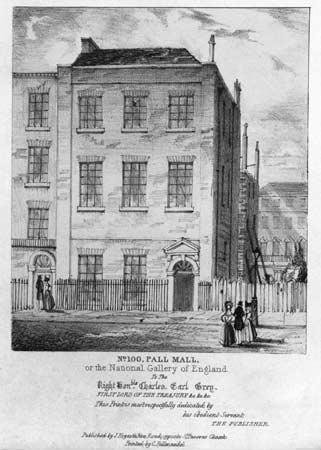|
UCL Main Building
The Main Building of University College London, facing onto Gower Street, London, Gower Street, Bloomsbury, includes the Octagon, Quad, Cloisters, Main Library, Flaxman Gallery and the William Wilkins (architect), Wilkins Building. The North Wing, South Wing, Chadwick Building and Pearson Building are also considered part of the main UCL building. History In 1827, a year after the founding of UCL, construction of the main building began on the site of the old Carmarthen Square. At the centrepiece of the building is an ornate dome, which is visible throughout the immediate area. The Octagon was designed by the Architect William Wilkins (architect), William Wilkins, who also designed the National Gallery (London), National Gallery. The original plans by Wilkins called for a U-shaped enclosure around the quad. Funds, however, ran out in 1829 with only the portico and dome finished. Wilkins' original plans were not completed until the 20th century: The Main Building was final ... [...More Info...] [...Related Items...] OR: [Wikipedia] [Google] [Baidu] |
University College London
University College London (Trade name, branded as UCL) is a Public university, public research university in London, England. It is a Member institutions of the University of London, member institution of the Federal university, federal University of London, and is the second-largest list of universities in the United Kingdom by enrolment, university in the United Kingdom by total enrolment and the largest by postgraduate enrolment. Established in 1826 as London University (though without university degree-awarding powers) by founders who were inspired by the radical ideas of Jeremy Bentham, UCL was the first university institution to be established in London, and the first in England to be entirely secular and to admit students regardless of their religion. It was also, in 1878, among the first university colleges to admit women alongside men, two years after University College, Bristol, had done so. Intended by its founders to be Third-oldest university in England debate ... [...More Info...] [...Related Items...] OR: [Wikipedia] [Google] [Baidu] |
John Flaxman
John Flaxman (6 July 1755 – 7 December 1826) was a British sculptor and draughtsman, and a leading figure in British and European Neoclassicism. Early in his career, he worked as a modeller for Josiah Wedgwood's pottery. He spent several years in Rome, where he produced his first book illustrations. He was a prolific maker of funerary monuments. Early life and education He was born in York. His father, also named John (1726–1803), was well known as a moulder and seller of plaster casts at the sign of the Golden Head, New Street, Covent Garden, London. His first wife's maiden name was Lee, and they had two sons, William and John. Within six months of John's birth, the family returned to London. He was a sickly child, high-shouldered, with a head too large for his body. His mother died when he was nine, and his father married Elisabeth Gordon in 1763. John had little schooling and was largely self-educated. He took delight in drawing and modelling from his father's stock-i ... [...More Info...] [...Related Items...] OR: [Wikipedia] [Google] [Baidu] |
Domes
A dome () is an architectural element similar to the hollow upper half of a sphere. There is significant overlap with the term cupola, which may also refer to a dome or a structure on top of a dome. The precise definition of a dome has been a matter of controversy and there are a wide variety of forms and specialized terms to describe them. A dome can rest directly upon a rotunda wall, a drum, or a system of squinches or pendentives used to accommodate the transition in shape from a rectangular or square space to the round or polygonal base of the dome. The dome's apex may be closed or may be open in the form of an oculus, which may itself be covered with a roof lantern and cupola. Domes have a long architectural lineage that extends back into prehistory. Domes were built in ancient Mesopotamia, and they have been found in Persian, Hellenistic, Roman, and Chinese architecture in the ancient world, as well as among a number of indigenous building traditions throughout ... [...More Info...] [...Related Items...] OR: [Wikipedia] [Google] [Baidu] |
School Buildings Completed In 1985
A school is the educational institution (and, in the case of in-person learning, the building) designed to provide learning environments for the teaching of students, usually under the direction of teachers. Most countries have systems of formal education, which is sometimes compulsory. In these systems, students progress through a series of schools that can be built and operated by both government and private organization. The names for these schools vary by country (discussed in the '' Regional terms'' section below) but generally include primary school for young children and secondary school for teenagers who have completed primary education. An institution where higher education is taught is commonly called a university college or university. In addition to these core schools, students in a given country may also attend schools before and after primary (elementary in the U.S.) and secondary (middle school in the U.S.) education. Kindergarten or preschool provide some sch ... [...More Info...] [...Related Items...] OR: [Wikipedia] [Google] [Baidu] |
Historic England
Historic England (officially the Historic Buildings and Monuments Commission for England) is an executive non-departmental public body of the British Government sponsored by the Department for Culture, Media and Sport. It is tasked with protecting the historic environment of England by preserving and listing historic buildings, scheduling ancient monuments, registering historic parks and gardens, advising central and local government, and promoting the public's enjoyment of, and advancing their knowledge of, ancient monuments and historic buildings. History The body was created by the National Heritage Act 1983, and operated from April 1984 to April 2015 under the name of English Heritage. In 2015, following the changes to English Heritage's structure that moved the protection of the National Heritage Collection into the voluntary sector in the English Heritage Trust, the body that remained was rebranded as Historic England. The body also inherited the Historic Engla ... [...More Info...] [...Related Items...] OR: [Wikipedia] [Google] [Baidu] |
Listed Building
In the United Kingdom, a listed building is a structure of particular architectural or historic interest deserving of special protection. Such buildings are placed on one of the four statutory lists maintained by Historic England in England, Historic Environment Scotland in Scotland, in Wales, and the Historic Environment Division of the Department for Communities in Northern Ireland. The classification schemes differ between England and Wales, Scotland, and Northern Ireland (see sections below). The term has also been used in the Republic of Ireland, where buildings are protected under the Planning and Development Act 2000, although the statutory term in Ireland is "Record of Protected Structures, protected structure". A listed building may not be demolished, extended, or altered without permission from the local planning authority, which typically consults the relevant central government agency. In England and Wales, a national amenity society must be notified of any work to ... [...More Info...] [...Related Items...] OR: [Wikipedia] [Google] [Baidu] |
Slade School Of Art
The UCL Slade School of Fine Art (informally The Slade) is the art school of University College London (UCL) and is based in London, England. It has been ranked as the UK's top art and design educational institution. The school is organised as a department of UCL's Faculty of Arts and Humanities. History The school traces its roots back to 1868 when lawyer and philanthropist Felix Slade (1788–1868) bequeathed funds to establish three Chairs in Fine Art, to be based at Oxford University, Cambridge University and University College London, where six studentships were endowed. Distinguished past teachers include Henry Tonks, Wilson Steer, Randolph Schwabe, William Coldstream, Andrew Forge, Lucian Freud, John Hilliard, Bruce McLean, Alfred Gerrard and Phyllida Barlow. Edward Allington was Professor of Fine Art and Head of Graduate Sculpture until his death in 2017. Two of its most important periods were immediately before, and immediately after, the turn of the twentieth ... [...More Info...] [...Related Items...] OR: [Wikipedia] [Google] [Baidu] |
Astronomy
Astronomy is a natural science that studies celestial objects and the phenomena that occur in the cosmos. It uses mathematics, physics, and chemistry in order to explain their origin and their overall evolution. Objects of interest include planets, natural satellite, moons, stars, nebulae, galaxy, galaxies, meteoroids, asteroids, and comets. Relevant phenomena include supernova explosions, gamma ray bursts, quasars, blazars, pulsars, and cosmic microwave background radiation. More generally, astronomy studies everything that originates beyond atmosphere of Earth, Earth's atmosphere. Cosmology is a branch of astronomy that studies the universe as a whole. Astronomy is one of the oldest natural sciences. The early civilizations in recorded history made methodical observations of the night sky. These include the Egyptian astronomy, Egyptians, Babylonian astronomy, Babylonians, Greek astronomy, Greeks, Indian astronomy, Indians, Chinese astronomy, Chinese, Maya civilization, M ... [...More Info...] [...Related Items...] OR: [Wikipedia] [Google] [Baidu] |
Jeremy Bentham
Jeremy Bentham (; 4 February Dual dating, 1747/8 Old Style and New Style dates, O.S. [15 February 1748 Old Style and New Style dates, N.S.] – 6 June 1832) was an English philosopher, jurist, and social reformer regarded as the founder of modern utilitarianism. Bentham defined as the "fundamental axiom" of his philosophy the principle that "it is the greatest happiness of the greatest number that is the measure of right and wrong." He became a leading theorist in Anglo-Americans, Anglo-American philosophy of law, and a political radical whose ideas influenced the development of welfarism. He advocated Individualism, individual and economic freedoms, the separation of church and state, freedom of expression, equal rights for women, the right to divorce, and (in an unpublished essay) the decriminalizing of homosexual acts. He called for the abolitionism, abolition of slavery, capital punishment#Abolition of capital punishment, capital punishment, and physical punishment, includ ... [...More Info...] [...Related Items...] OR: [Wikipedia] [Google] [Baidu] |
Elizabeth II Of The United Kingdom
Elizabeth II (Elizabeth Alexandra Mary; 21 April 19268 September 2022) was Queen of the United Kingdom and other Commonwealth realms from 6 February 1952 until her death in 2022. She had been queen regnant of 32 sovereign states during her lifetime and was the monarch of 15 realms at her death. Her reign of 70 years and 214 days is the longest of any British monarch, the second-longest of any sovereign state, and the longest of any queen regnant in history. Elizabeth was born in Mayfair, London, during the reign of her paternal grandfather, King George V. She was the first child of the Duke and Duchess of York (later King George VI and Queen Elizabeth The Queen Mother). Her father acceded to the throne in 1936 upon the abdication of his brother Edward VIII, making the ten-year-old Princess Elizabeth the heir presumptive. She was educated privately at home and began to undertake public duties during the Second World War, serving i ... [...More Info...] [...Related Items...] OR: [Wikipedia] [Google] [Baidu] |
Gower Street, London
Gower Street is a two-way street in Bloomsbury, central London, running from Euston Road at the north to Montague Place in the south. The street continues as North Gower Street north of Euston Road, while to the south it becomes Bloomsbury Street. University College London (UCL) and the Royal Academy of Dramatic Art (RADA) are located along Gower Street as is part of University College Hospital. UCL maintains two student residences along the street: the Arthur Tattersall and John Tovell Houses. Of the many UCL buildings along Gower Street, the Cruciform Building is especially notable, both for its striking red exterior and its obvious form, even when viewed from the road. Old boys of University College School are known as " Old Gowers" after the street where it was founded and co-located with UCL. SOAS, University of London and Birkbeck College are also in proximity. Euston Square Underground station is located at the north end of Gower Street, at the corner of Euston R ... [...More Info...] [...Related Items...] OR: [Wikipedia] [Google] [Baidu] |
National Gallery (London)
The National Gallery is an art museum in Trafalgar Square in the City of Westminster, in Central London, England. Founded in 1824, it houses a collection of more than 2,300 paintings dating from the mid-13th century to 1900. The current director of the National Gallery is Gabriele Finaldi. The National Gallery is an exempt charity, and a non-departmental public body of the Department for Culture, Media and Sport. Its collection belongs to the government on behalf of the British public, and entry to the main collection is free of charge. Unlike comparable museums in continental Europe, the National Gallery was not formed by nationalising an existing royal or princely art collection. It came into being when the British government bought 38 paintings from the heirs of John Julius Angerstein in 1824. After that initial purchase, the gallery was shaped mainly by its early directors, especially Charles Lock Eastlake, and by private donations, which now account for two-thirds ... [...More Info...] [...Related Items...] OR: [Wikipedia] [Google] [Baidu] |











